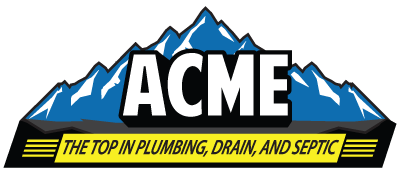Top Causes of Septic Tank Failures and How to Prevent Them
Septic tank failures can be a homeowner’s worst nightmare, leading to unpleasant odors, water damage, and expensive repairs. Understanding the common causes of septic tank failures and implementing preventative measures can help ensure your system functions efficiently for years to come. Here are the top causes of septic tank failures and how to prevent them.
Top Causes of Septic Tank Failures
Lack of Regular Maintenance: One of the most common causes of septic tank failures is neglecting regular maintenance. Over time, solids build up in the tank and, if not pumped out regularly, can overflow into the drain field, causing blockages and system failure.
Flushing Non-Biodegradable Items: Flushing items such as sanitary products, diapers, wipes, and other non-biodegradable materials can cause significant clogs in your septic system. These items do not break down easily and can block the pipes leading to and from the septic tank.
Excessive Water Usage: Using large amounts of water in a short period can overwhelm your septic system. When too much water enters the tank at once, it doesn’t allow enough time for solids to settle, leading to the potential for clogs and overflow.
Chemical Cleaners and Additives: Many household cleaners and additives contain chemicals that can kill the beneficial bacteria in your septic tank. These bacteria are essential for breaking down waste, and without them, your system can become clogged and fail.
Tree Root Infiltration: Tree roots can infiltrate and damage your septic system by entering the pipes and tank. Once inside, they can cause significant blockages and even crack the tank or pipes, leading to leaks and system failure.
Poor Installation or Design: A septic system that is poorly designed or installed incorrectly can lead to frequent failures. Issues such as improper tank size, inadequate drain field design, or incorrect placement can all contribute to system problems.
How to Prevent Septic Tank Failures
Schedule Regular Maintenance: Regular maintenance is key to keeping your septic system functioning properly. Have your septic tank pumped and inspected by a professional like ACME Plumbing every three to five years, depending on usage and tank size. Regular pumping removes the buildup of solids, preventing overflow and blockages.
Be Mindful of What You Flush: Only flush toilet paper and human waste down the toilet. Dispose of other items, such as sanitary products, wipes, and diapers, in the trash. This simple habit can significantly reduce the risk of clogs and system failures.
Conserve Water: Reduce water usage by fixing leaks, installing water-saving fixtures, and spreading out water-intensive activities, such as laundry and dishwashing, throughout the week. By managing water usage, you prevent overwhelming your septic system and allow it to function more efficiently.
Use Septic-Safe Products: Choose household cleaners and additives that are labeled as septic-safe. These products are designed to be gentle on your system and help maintain the balance of beneficial bacteria in your septic tank.
Monitor Tree and Plant Growth: Be cautious of planting trees and shrubs near your septic system. If you already have trees nearby, regularly inspect for root growth near your septic tank and drain field. Consider removing or relocating trees that pose a threat to your system.
Ensure Proper Installation and Design: If you’re installing a new septic system or replacing an old one, work with a reputable professional who can ensure proper design and installation. A well-designed system with the correct tank size and drain field layout will minimize the risk of future failures.
Septic tank failures can be inconvenient, costly, and hazardous to your health and property. By understanding the top causes of septic tank failures and taking preventative measures, you can protect your system and ensure it operates smoothly. Regular maintenance, mindful disposal practices, water conservation, using septic-safe products, monitoring vegetation, and ensuring proper installation can all contribute to a healthy and efficient septic system. Don’t wait for a problem to arise—take proactive steps today to safeguard your septic system and avoid the headache of unexpected failures.
